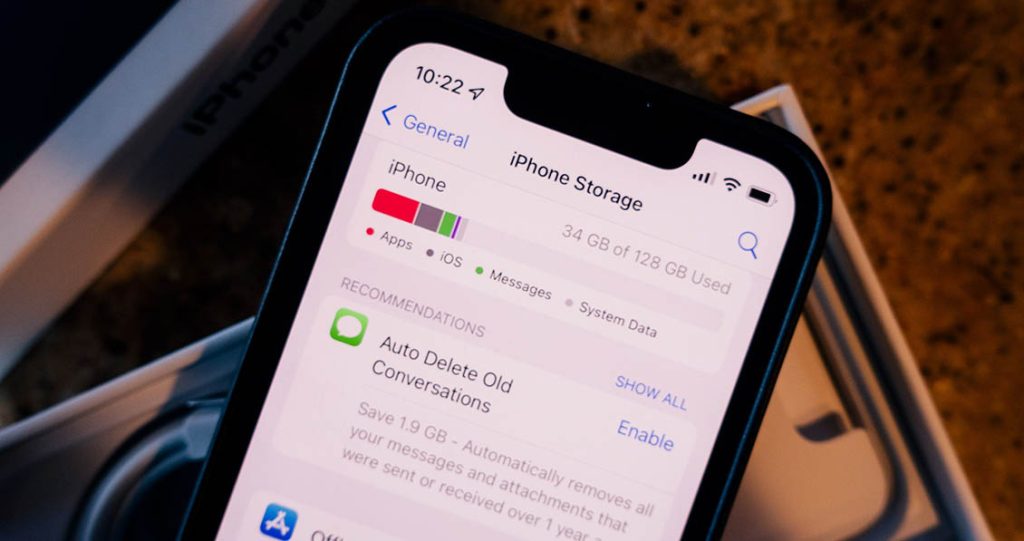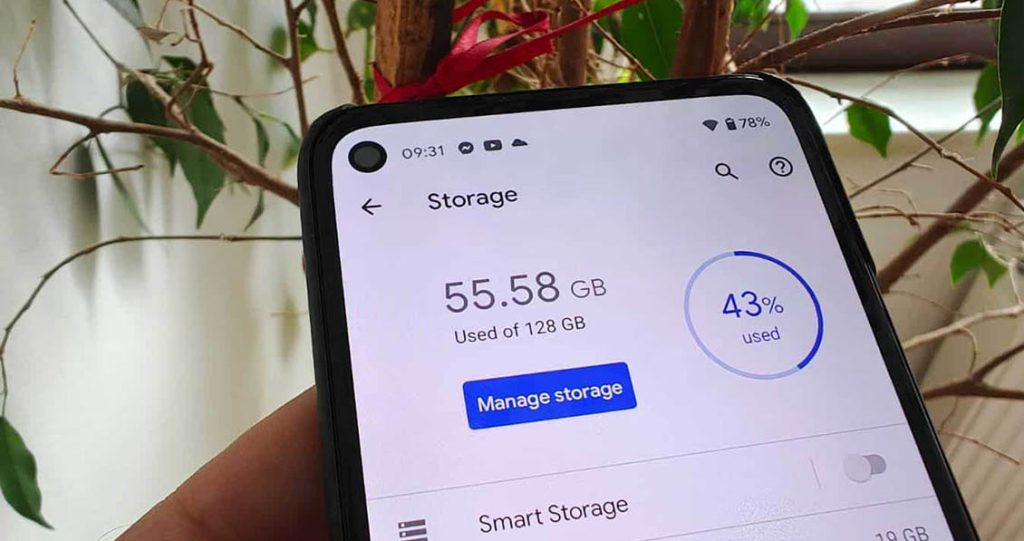In our contemporary digital era, smartphones have seamlessly integrated into our daily routines, serving as repositories for our cherished photos, invaluable videos, diverse apps, and essential files. Yet, the persistent issue of limited storage space frequently impedes the fluid functionality of these devices. Fortunately, a myriad of practical and efficient methods are available to adeptly manage and optimize storage capacity on our smartphones, guaranteeing sufficient room for critical data and vital applications.
The prominence of smartphones in our lives is indisputable, acting as multifunctional tools that store cherished memories in the form of photos and videos, facilitate seamless communication through a multitude of apps, and accommodate an assortment of files essential for both personal and professional endeavors. However, the constraints imposed by limited storage capacity often curtail our devices’ efficiency, prompting the need for proactive storage management strategies.
Amidst these challenges, the good news is that an array of effective techniques and solutions have emerged to address the persistent issue of space constraints on our smartphones. These methods, when employed adeptly, enable users to efficiently navigate the labyrinth of storage limitations, thereby ensuring an optimal balance between indispensable data and available capacity.
Optimization of storage space has become a pressing need as our reliance on smartphones continues to grow. Balancing the multitude of functionalities and data storage requirements within the confined space of our devices has become an art form in itself. By implementing intelligent and strategic approaches to storage management, users can liberate substantial space on their smartphones, fostering an environment conducive to seamless operation and unhindered performance.
Hence, the quest for efficient storage management on smartphones has become a crucial endeavor. The need to strike a harmonious equilibrium between the myriad demands of data storage and the finite limits of available space is more pertinent than ever. Fortunately, with the arsenal of techniques and practices available, users can skillfully navigate the challenge of limited storage, ensuring that essential data and applications harmoniously coexist within the confines of their smartphones.
Understanding Storage Space Allocation
Understanding how storage space is allocated within your smartphone is a fundamental aspect of efficient storage management. Most smartphones generally feature two primary storage categories: internal storage and external storage, commonly in the form of SD cards or expandable memory. Internal storage is the primary repository that houses the operating system, pre-installed applications, and user-generated data, such as photos, videos, and app data. External storage supplements the internal memory, allowing users to store additional files, media, or apps beyond the device’s internal capacity.
One effective method for expanding storage without physically augmenting the device’s memory is through the utilization of cloud storage solutions. Cloud services like Google Drive, Dropbox, iCloud, and others offer users a virtual space to store various types of data remotely. These platforms allow seamless synchronization and access to files across multiple devices, reducing the dependency on local storage while freeing up significant space on the device.
Cloud storage services often provide a range of storage plans, offering users flexibility in selecting the capacity that best suits their needs. Users can store photos, videos, documents, and other files securely in the cloud, thereby alleviating the burden on the device’s internal storage. Additionally, these platforms frequently offer synchronization features, ensuring that files stored in the cloud remain accessible from any connected device, promoting convenience and accessibility.

Moreover, many cloud storage solutions feature automatic backup functionalities, allowing users to effortlessly back up their data, ensuring its safety and accessibility even in the event of device damage or loss. This not only conserves space on the device but also provides an added layer of security for valuable data.
Furthermore, these cloud services often integrate seamlessly with various apps and operating systems, facilitating easy sharing and collaboration on files. Users can share documents, photos, or videos with others, enhancing productivity and connectivity.
By utilizing the expansive capabilities of cloud-based platforms, users can effectively offload data from their devices, optimize internal storage, and enjoy the convenience of remote access to their files, thereby enhancing both storage capacity and accessibility.
Optimizing Photos and Videos
Photos and videos, being high-resolution and memory-intensive files, frequently contribute to the majority of storage consumption on smartphones. There are several effective strategies to optimize the storage occupied by these media files.
Consider utilizing photo and video compression techniques or employing photo management apps that automatically compress images or resize videos without compromising their quality significantly. Various applications offer options to reduce the file sizes of images and videos, allowing users to save space while retaining acceptable quality. Additionally, transferring media files to a computer or cloud storage is an effective method to free up space on the device. Once transferred, review and delete duplicate or unnecessary files regularly to prevent redundancy and conserve storage capacity.
Managing Apps and Cache Data
Apps often accumulate cache data, temporary files, and residual data during usage, consuming a substantial portion of the device’s storage. Regularly clearing app cache can help reclaim storage space. Most smartphones offer the option to clear cache data for individual apps through the device’s settings menu. Additionally, uninstalling unused or redundant applications that are no longer required can significantly free up storage space.
Monitoring app usage and reviewing installed applications periodically can help identify those that are rarely used or unnecessary, allowing users to remove them to reclaim valuable storage space. Furthermore, users can opt for ‘Lite’ versions of apps or progressive web apps (PWAs) that consume less storage space while offering similar functionalities.
Moreover, enabling settings within apps to limit or delete stored data, such as downloaded files or offline content, can help manage storage efficiently. Some apps have settings that allow users to control the amount of cached data they store, providing more control over storage consumption.
Regularly conducting a storage audit by navigating to the device’s storage settings to analyze which apps consume the most space can aid in identifying areas where space optimization is needed. This process enables users to make informed decisions about which apps or files to manage, delete, or transfer to alternative storage solutions, thus effectively optimizing the smartphone’s storage capacity.
Deleting Unnecessary Files and Downloads
As we use smartphones for various tasks, they tend to accumulate temporary files, residual data from app installations, and cached files over time. These files, often unnecessary and rarely used, occupy valuable storage space. Utilizing file manager apps available on app stores can assist in identifying and deleting such redundant data efficiently.
File manager apps offer features that enable users to navigate through different folders and directories on their devices. They help locate and delete temporary files, cache data, and residual files left behind by apps and system processes. By regularly scanning and cleaning these unwanted files, users can free up substantial storage space.

Additionally, periodic review and deletion of downloaded files are beneficial. Files downloaded from browsers, messaging apps, or other sources can accumulate over time. Checking and deleting these files through the respective apps or the device’s file manager can help regain significant storage capacity.
Utilizing Storage Management Apps
In addition to built-in tools and file managers, dedicated storage management apps can provide comprehensive solutions for optimizing storage space on smartphones. These apps offer a range of features designed specifically for efficient storage management.
Storage management apps typically include functionalities like storage analysis, junk file cleaning, app management, and duplicate file identification and removal. They provide users with detailed insights into their storage usage, highlighting which apps or files consume the most space. With this information, users can easily identify and manage large files, temporary data, and unnecessary app caches that can be safely deleted to reclaim space.
Moreover, these apps often offer automated cleaning features that schedule regular scans to identify and remove junk files, cache data, residual files, and duplicate content without manual intervention. This automation ensures consistent optimization of storage space without requiring frequent user intervention.
It’s important to choose storage management apps from reputable developers to ensure they operate securely and do not compromise the device’s performance or user data. Regularly using these tools to maintain storage cleanliness can significantly contribute to maximizing available space on smartphones and ensuring smoother device performance.
Managing Offline Content and Downloads
Downloading media content like movies, music playlists, podcasts, or documents for offline use can significantly consume device storage space. While offline accessibility is convenient, it’s essential to regularly review and remove files that are no longer required. For instance, deleting previously downloaded movies or podcasts that have been listened to or viewed can free up significant storage space.
Users can access their downloaded content through specific apps or the device’s storage settings to identify and remove files that are no longer needed. This selective deletion helps ensure that only necessary offline data is retained, optimizing storage space on the smartphone.
Regular Device Maintenance and Updates
Consistent software updates play a pivotal role in not just enhancing the device’s functionality but also in optimizing storage space. Operating system updates and app updates often include features aimed at refining storage management, which may include improvements in file management, cache handling, or space-saving optimizations.
Moreover, performing routine device maintenance can contribute to efficient storage management. This maintenance involves tasks like clearing the cache partition, which eliminates temporary data accumulated by apps and the system. Some devices also offer built-in optimization settings that help manage storage by suggesting files or apps for removal based on usage patterns.
Efficient management of storage space on smartphones is vital for maintaining device performance and usability. By implementing diverse strategies such as leveraging cloud storage, optimizing media files, managing apps and cache data, deleting unnecessary files, utilizing storage management apps, controlling offline content, and ensuring regular device maintenance and updates, users can effectively maximize available storage, ensuring a seamless and clutter-free experience with their smartphones. Adopting these practices not only enhances storage space but also contributes to a smoother and more enjoyable user experience overall.

